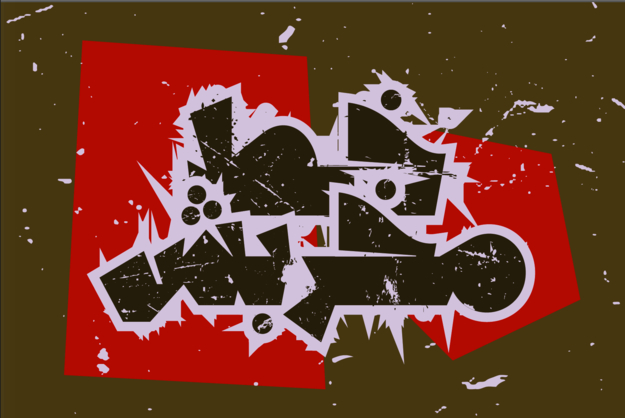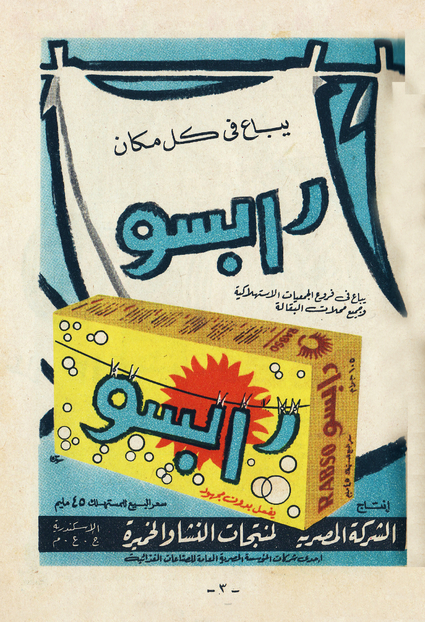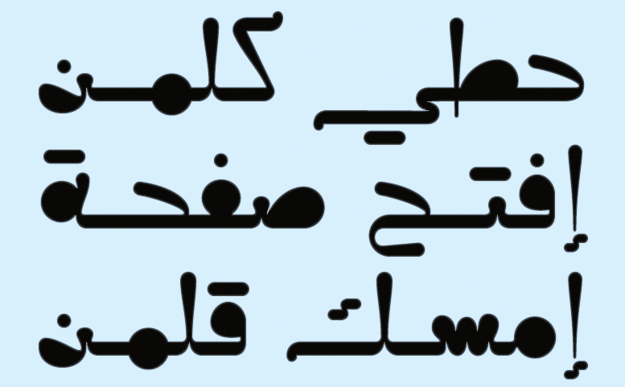Edo Smitshuijzen: Please introduce yourself
I am born in Egypt and graduated from the Fine Arts College of Alexandria University. I also hold a Master’s degree in design and creative industry management from the Baltic Academy of Riga, Latvia. I started working in graphic design when I was an 18 year old student, back in 1999. My work varied from digital illustrations to typography and web clipart. After graduation, I moved from Alexandria to Cairo to join a creative team at a design studio that specialised in creating marketing materials for real estate businesses. In that job, I discovered my fascination for Arabic type design. It all started on the day when we had a client who requested some stylistic modifications for an Arabic display font that he had acquired for free and he wanted to use in a design for his company. The deadline was tight and I had to quickly figure out a way to modify the font file. After doing a quick research on the internet, I came across the FontLab Studio program. I downloaded and opened it, and kept messing around with it until I found a way to complete the job and submit the font to the client. I consider that experience as my very first training in type design. Later on, when I moved away from designing and started teaching, I began to design my own Arabic fonts. From the start, I put much efforts in designing experimental fonts for personal use and pleasure. I believed that no one would even consider using these designs due to their weirdness. I used odd letterforms that were often difficulty to read. My assumptions turned out to be wrong; in time my weird work found interested parties. And that’s how I became a typeface designer.
ES: What is your working situation now?
I’m a full time type designer focused on developing experimental Arabic fonts. I’m currently contracted with some of the leading font and clipart networks including Creative Market, Canva, OverApp, Font Bundles, HelloFont and CreativeFabrica. In addition to type design, I’m a visiting faculty. I teach visual communication at the Baltic academy where I obtained my degree. I also taught graphic design at Raffles Institute in India for nearly 4 years. My clients are diverse; they include individuals, like graphic designers and creative professionals, and corporations like Majd Channel Network, Turkish Airlines, Dar El Shorouk Publisher among other.
The fonts I sell in my online shop are all entirely produced by myself, but whenever I work for a client on a bespoke font, I often seek help and ask many questions related to the design process. I chose to follow the same business model that most clipart artists do. It is not really that difficult for me to do it all by myself because at the end of the day I know that someone else is getting paid a commission to do the marketing part. The only difference between me and other clipart artists is that fonts take more time to produce, compared to illustrations, icons or templates. Next to the eleven internet outlets that sell my type designs, I do have my own website that is still a very basic and currently functions as my business card on the internet. I think in time, I will certainly replace it with perhaps an online font foundry.
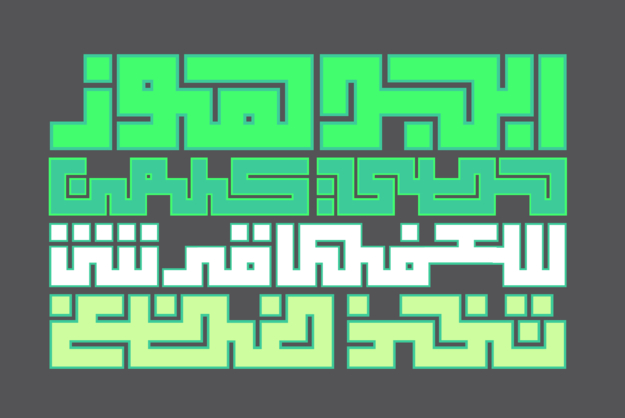
ES: What sort of type designer are you?
Well, I consider myself an artist in the first place. This means I like trying new approaches and new ways of drawing letterforms. I’m not really a big fan of ‘the traditional way of designing fonts’, so I pay little attention to criticism from type professionals because after all I consider my design work as experimental and it should look fresh and extraordinary (and sometimes odd).
I think my drawing skills came before my computer skills. I spent a good portion of my study years practicing drawing while using many and different types of tools on all sorts of surfaces. To me, drawing paved the way to acquiring skills in computer graphics, and from there to type design and typography.
I feel type design sits between language and visual art, and I think a type designer should master that particular field of knowledge in order to succeed. The biggest handicap for any type designer is not spending enough time on research and development. In addition a type designer should be able to meet the technical challenges related to encoding the OpenType features.
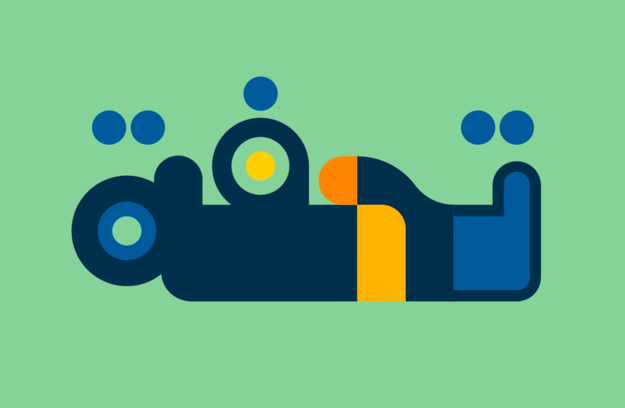
ES: Did you experience professional changes over time, and what lies ahead?
Definitely! If compared to a decade ago, I believe we are witnessing a revolutionary change in the profession right now. Every day I spot loads of wonderful typefaces and fresh new talent behind them. I believe the spread of modern design education and the ease to acquire training and information played a vital rule in this change. Together with modern technologies such as OpenType-SVG and variable fonts, the future of type design is in fact very promising.
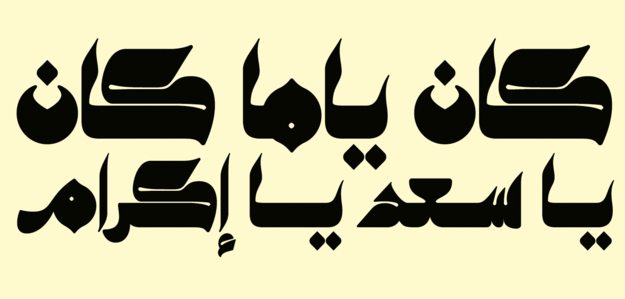

ES: Who are your design heroes and sources of inspiration?
Rayan Abdullah is my hero in Arabic type; I like his style and his confidence about the work he has done. I’m influenced by the consistency of his work and the way he explains the design process. You can say he is my hero as an academic rather than as a type designer. I remember very well that his publications were among the first that introduced me to Arabic type, calligraphy and pictograph designs. David Carson is my Western hero of lettering because his contribution to typography is innovative and fascinating as well.
Of course the internet today can be a rather addictive source of inspiration.There are so many social media that focus on first visual impressions. I am followed by thousands and I follow myself more than 1000 professionals. When you are on social media for more than ten years, these numbers are not shocking, but rather ‘normal’. Next to this I find my inspiration from my father’s bookshelves. He has a collection of old Egyptian books and magazines from the 50s until the 90s. For me this is a very rich source of inspiration. But of course, just working on fonts every day generates even more ideas for new designs.
